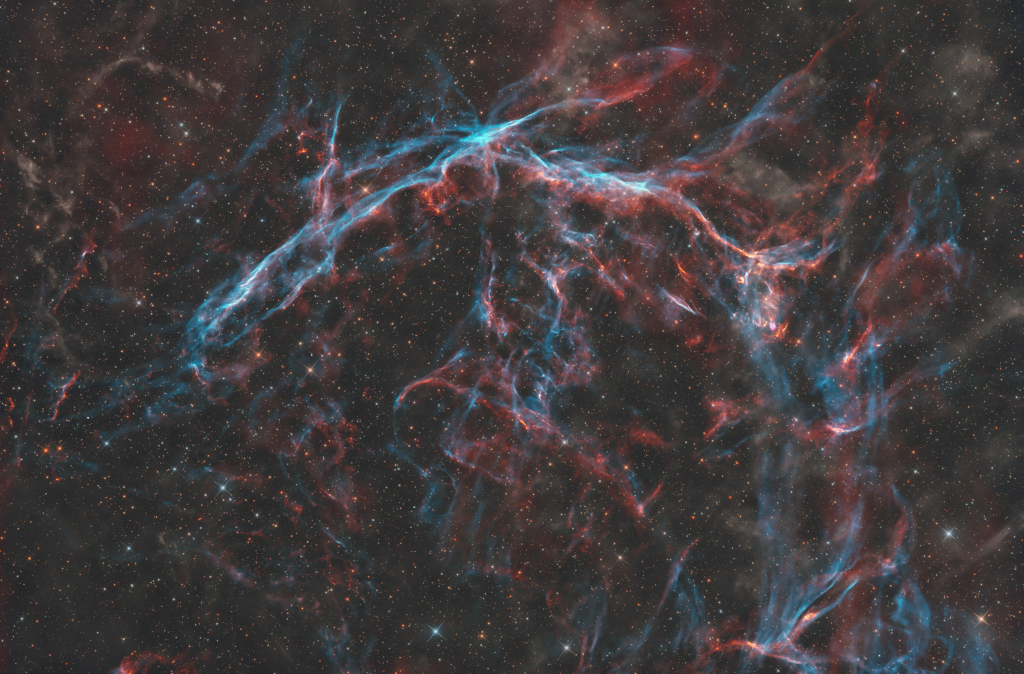超新星殘骸 CTA 1
Supernova Remnant CTA 1

來源:Thomas Lelu|發表日期:2024-08-23
1960 年,天文學家發現了這顆超新星殘骸,它是射電波長的發射源,此後被確定為一顆大質量恆星死亡爆炸的結果。但是從預期的脈衝星--大質量恆星坍縮核心的旋轉中子星殘餘物--中沒有探測到射電脈衝。在最初的超新星爆炸後大約 10 , 000 年,星際碎片雲在光學波長下非常暗淡。在這幅深度望遠鏡影像中,CTA 1 的可見光波長髮射來自仍在膨脹的衝擊前沿,這幅影像橫跨仙王座北部星域約 2 度。雖然後來沒有發現射電波長的脈衝星,但費米伽馬射線太空望遠鏡在 2008 年探測到了 CTA 1 的脈衝發射,確定了這顆超新星殘餘的旋轉中子星。在越來越多的脈衝星中,該源被認為是第一顆在射電波長上安靜但在高能伽馬射線中發出脈衝的脈衝星。
原文:There is a quiet pulsar at the heart of CTA 1. The supernova remnant was discovered as a source of emission at radio wavelengths by astronomers in 1960 and since identified as the result of the death explosion of a massive star. But no radio pulses were detected from the expected pulsar, the rotating neutron star remnant of the massive star's collapsed core. Seen about 10,000 years after the initial supernova explosion, the interstellar debris cloud is faint at optical wavelengths. CTA 1's visible wavelength emission from still expanding shock fronts is revealed in this deep telescopic image, a frame that spans about 2 degrees across a starfield in the northern constellation of Cepheus. While no pulsar has since been found at radio wavelengths, in 2008 the Fermi Gamma-ray Space Telescope detected pulsed emission from CTA 1, identifying the supernova remnant's rotating neutron star. The source has been recognized as the first in a growing class of pulsars that are quiet at radio wavelengths but pulse in high-energy gamma-rays.
※ 本文由萌芽機器人自動轉貼自每日一天文圖(Astronomy Picture of the Day,APOD),原文為英文,正體中文是透過 DeepL 翻譯及 OpenCC 進行自動處理,內容僅供參考,若有任何錯誤之處還請見諒!
關於每日一天文圖:每日一天文圖網站是美國國家航空暨太空總署與密西根理工大學提供的服務,網站每天提供一張影像或圖片,並由天文學家撰寫扼要說明其特別之處。